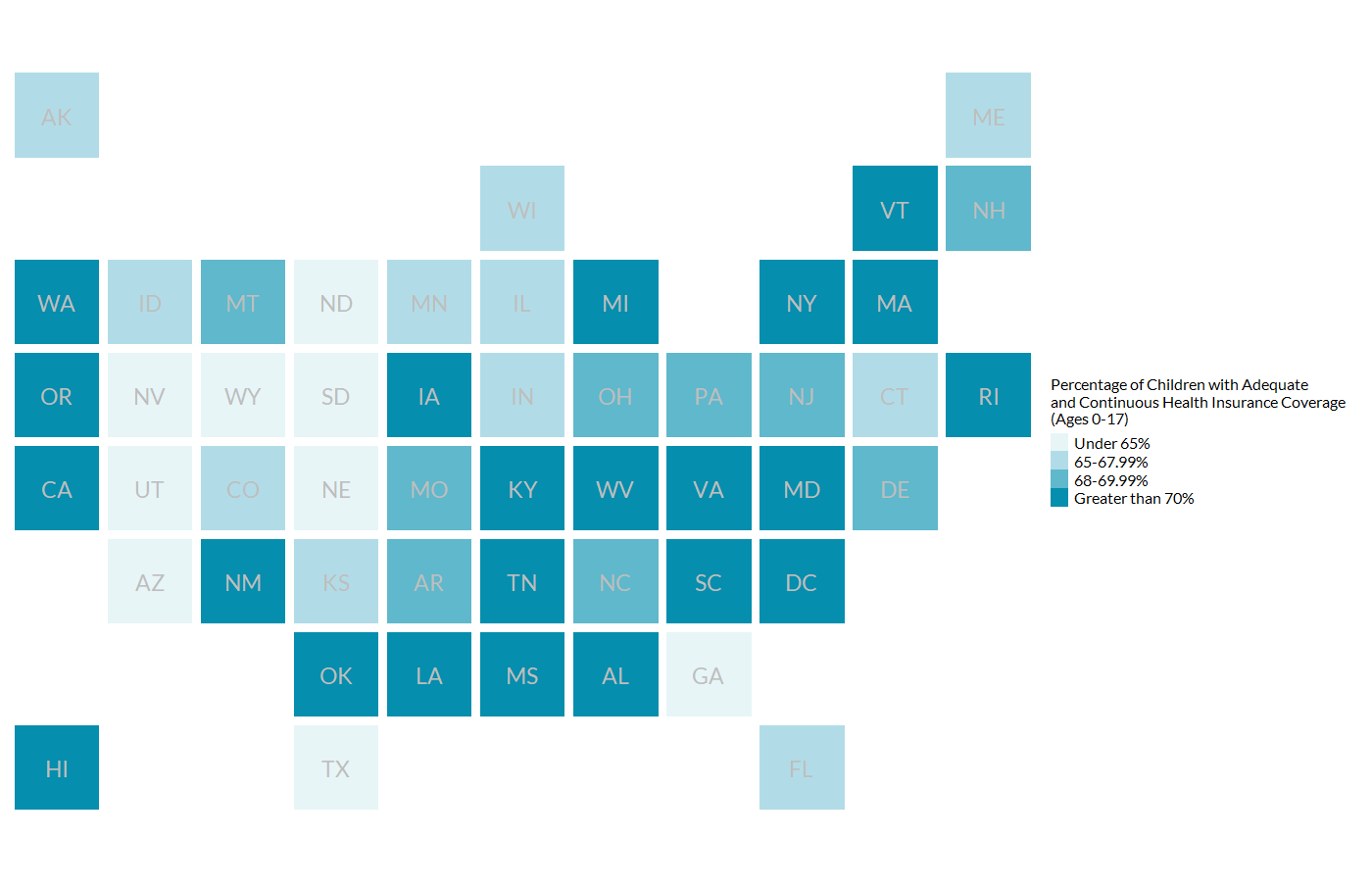
Maternal & Child Health Data
Health Insurance Coverage, 2023
Health insurance coverage can improve maternal and child health outcomes by removing financial barriers to accessing and using healthcare services, especially preventive care. Mothers with health insurance coverage access more prenatal care services than uninsured mothers; children with insurance are more likely to have a regular source of primary care and to use medical and dental care more often than children without insurance. Lack of insurance can affect health outcomes for pregnant women and children, as uninsured women are more likely to experience poor outcomes during pregnancy and delivery, and uninsured newborns are more likely to have adverse health outcomes, including low birthweight and death. Not all families have equal access to health insurance coverage, and structural racism can impede access to quality healthcare across racial and ethnic groups. The table below presents data disaggregated by race and ethnicity to help us identify inequities and work toward solutions that promote equity.
Home Visiting as Part of the Solution. Home visiting actively supports families’ access to healthcare services, for example, by making connections to community resources and local Medicaid offices to help families enroll in health insurance.
Health Insurance Coverage by State, 2020–2021

| State | All Groups | Asian | Black or African American | Hispanic | White | Another Group |
Notes: NA indicates that the total number of respondents to this measure (unweighted denominator) is less than 30, which does not meet Maternal and Child Health Bureau data display criteria. Counts associated with specific racial and ethnic groups (that is, Asian, Black or African American, Hispanic, White) are mutually exclusive.
Definition: Health insurance coverage refers to the percentage of children with adequate (Source: Insurance was considered adequate when the following criteria were met: (a) the child currently has health insurance coverage, AND (b) benefits usually or always meet child’s needs, AND (c) the insurance usually or always allows the child to see needed providers, AND (d) the insurance either has no out-of-pocket expenses or out-of-pocket expenses are usually or always reasonable. )Go to footnote #>1 insurance coverage to meet their health needs throughout the past 12 months, as reported by a parent or guardian. The measure includes both public and private health insurance coverage. The full population sample, pooled from 2020–2021 (two years combined) data, includes non-institutionalized children in the United States aged 0–17 and is weighted to be representative of that subgroup of the U.S. population.
Source: Child and Adolescent Health Measurement Initiative. 2020–2021 National Survey of Children’s Health (NSCH) data query. Data Resource Center for Child and Adolescent Health supported by the U.S. Department of Health and Human Services, Health Resources and Services Administration (HRSA), Maternal and Child Health Bureau (MCHB). www.childhealthdata.org